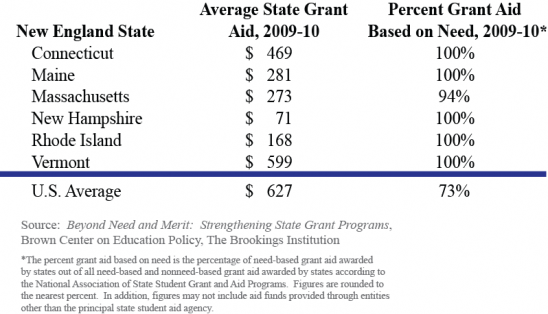It was quite a week for student financial aid news.
On the very day that a Republican filibuster halted a Democrat-backed student loan bill that would have extended the 3.4% interest rates on subsidized Stafford loans, a key administration official went to Boston to pitch the president’s goals on higher ed funding and a national think tank delivered recommendations on refocusing aid.
On the interest rate front, unless Congress can agree on a way to fund the interest-rate freeze, interest rates will double to 6.8% beginning July 1 for all new loans. Senate Democrats have proposed paying for the extension by ending a tax benefit for S corporations. The House had already passed a Republican-backed extension last month, which the Obama administration vows to veto because it would finance the interest-rate freeze by defunding parts of the health care affordability law.
- Also early in the week, U.S. Department of Education Under Secretary Martha Kanter spoke at Northeastern University and met with a small group of higher education leaders, including Massachusetts Secretary of Education Paul Reville and NEBHE’s President and CEO Michael Thomas. Kanter shared briefly some of the department’s goals for increasing college affordability including:
– Making the American Opportunity Tax Credit permanent
– Doubling the number of Federal Work Study opportunities for students
– Revisiting the distribution formula for Perkins Loans, Supplemental Educational Opportunity Grants (SEOG) and Work Study to reward campuses that offer lower net tuition prices and/or restrain tuition growth; enroll and graduate relatively higher numbers of Pell-eligible students; and prepares graduates to obtain employment and repay student loans through education and training programs.
- The Brookings Institution, meanwhile, hosted Making College Affordable: Strengthening State Grant Aid in conjunction with the release of “Beyond Need and Merit: Strengthening State Grant Programs,” a report from the Brookings State Grant Aid Study Group. Recommendations included:
– Focus resources on students whose chances of enrolling and succeeding in college will be most improved by the receipt of state support.
– Consolidate and simplify programs in order to make them easily understood by prospective college students and their families.
– Design programs so that they not only help students gain access to college but also encourage success after students arrive.
- The New England states vary in the average state grant aid per student and the percent of grant aid based on need (as opposed to merit). State data collected in the Brookings report indicate that while the New England states provided less grant aid to students than the national average in 2009-10, the six states granted a higher than average proportion of state grant aid to students based on need:

[ssba]
